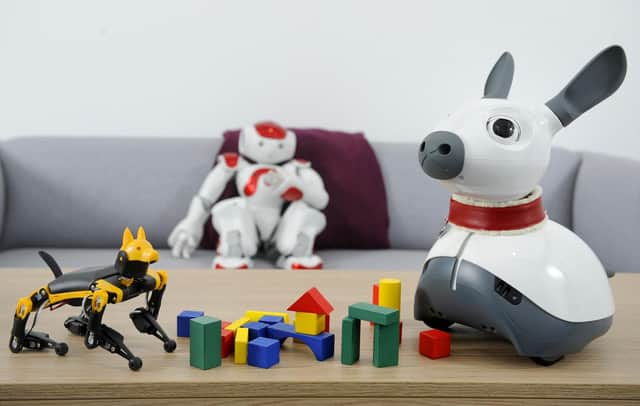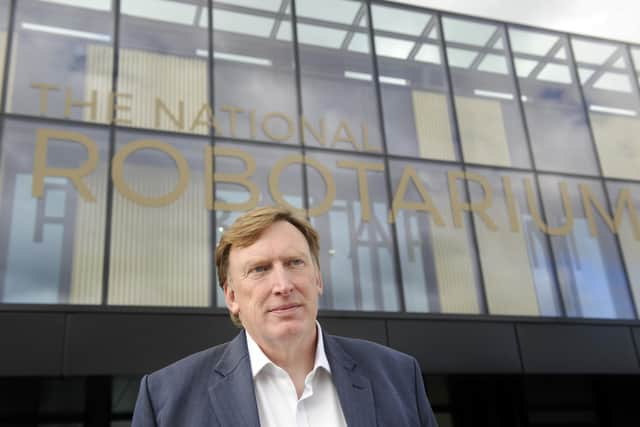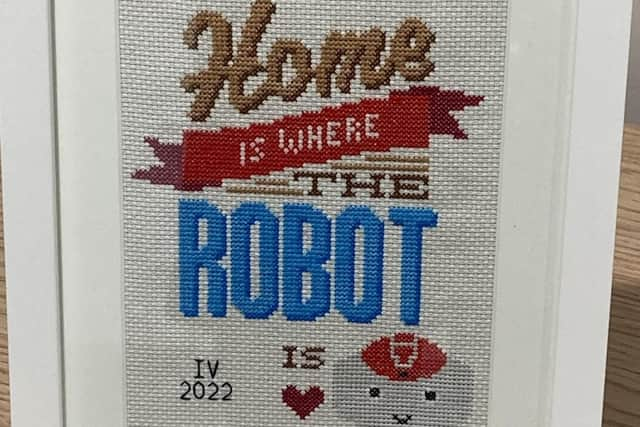The National Robotarium – taking AI and robotics to schoolchildren and beyond to create a better world


As Director of the National Robotarium in Edinburgh, he’s better-placed than most to realise this ambition.
In a bright meeting-room at the Robotarium, where you are greeted by a robo-receptionist, Miller explains why he’s fired up by inspiring future generations.
“Two things attracted me here above all else,” he says. “One was the potential of robots to help tackle societal issues, like climate change, and health and social care. The other was to help young people understand the potential of robotics and artificial intelligence, and to take up a career in robotics in some way.


“When you get to a certain point in your career, you start wondering what you can give back.”
The National Robotarium - a UK centre of excellence which opened in late September at the Heriot-Watt University campus on the outskirts of Edinburgh in partnership with The University of Edinburgh - has four main missions.
One is to host start-up robotics and artificial intelligence companies and help them grow. Touch Lab, which is developing an electronic skin to give robots a human-like sense of touch, is already in place. So is Crover, which has created a robot to burrow inside silos and capture data to ensure grain is being stored correctly. “It’s a worldwide application and it’s important because it replaces doing it manually, which is dangerous,” Miller explains.
The second mission is working with industry partners, in the large Robotic and Autonomous Systems Laboratory (RAS Lab for short), designed as a test-bed to trial big new robotic ideas.


Smaller labs are also available to industry partners, and to researchers.
Mission three - to welcome these researchers from universities across the UK to use the National Robotarium’s facilities (and the robots themselves) for their pioneering work.
All these three missions are progressing very well, but it is mission four, the National Robotarium’s outreach work, that really energises Miller - especially the opportunity to entrance children and instil a love of robots at a young age.
“The big thing with kids is to capture their imagination,” he says. “There was already robotics work going on with schools, but that’s really accelerating. We’ve got two new employees who have that work as a strong focus, and an area equipped with robotic technology that we've earmarked for the school visits..
“What gets them excited is hands-on experience - an opportunity to control their own robots, and to interact with robots.”
Miller says children tend to like robots that are very mobile and quickly programmed, and which help them better understand other science subjects in the curriculum.
“The most excitement we generate is when we power up the Spot robot,” says Miller. “Spot is a real publicity seeker who loves the attention!”
However, it’s not just about a single fun visit - but building a long-term relationship: “We want the visit to be the first of several times young people will see us through their educational career. We want to keep them engaged by developing a National Robotarium app which connects them to us - so we can send them video clips, invite them to events, and show them career pathways.
“And we’ve got bigger ideas - wouldn’t it be great to put an educational robot into the hands of every secondary school pupil in Scotland, and create a small business to make and maintain those robots?”
That’s a long-term ambition - and for now, Miller is busy, busy, busy with all those four missions.
“Our challenges at the moment are similar to those of the start-up that's got lots of customers banging on its door,” he says. “We need to bring a lot of new people into the organisation very quickly and get them up to speed - but at the same time respond to multiple requests for connection and involvement.”
On one day, Miller is meeting representatives from a company in Brazil. The next day, he is due to meet an energy business and later in the week, a pharmaceutical company.”
And when it comes to bringing in those new employees, the National Robotarium is already hiring.
“We've got a team of 10 engineers, and a couple of project managers that operate like an engineering company - and we’re looking for 5 or 6 more,” says Miller. “We've got the facilities in terms of lab space and workshops for building and testing robots, as well as the robots themselves.
“In the RAS Lab, we’re working with offshore renewable companies looking at maintenance and inspection of offshore assets. We're working with James Hutton Institute in agriculture, with a hotel group, with Grampian Health Board - and talking to a pharmaceutical company and to a telecoms company about the intersection of 5G and robotics.”
Two specific partnerships were showcased at the opening - Fourier Intelligence, which works in physiotherapy and therapeutics, and Tata Consultancy Services, a global IT business.
“We bring together research with the practical application of the technology,” explains Miller. “The third component is the customer’s problem - what are they trying to solve and how can we help? We have the people, equipment and facilities to help them.”
As well as the work with industry, Miller is very conscious of the Robotarium’s wider societal responsibility.
“It's a really important part of what we're here to do,” he says. “As the National Robotarium for the UK, we must have a voice in the discussion around what the future looks like - to talk to the public at large and listen to them as well.
“There’s a need to demystify what robotics and AI means for the future. We're trying to have a positive impact on the economy and society, and I firmly believe robotics and AI need to deliver on that - not by preaching to people but having a conversation that helps them explore the subject themselves.
“We need to show examples of where it's working, particularly around health and social care, and delivering real benefits - like a robot working alongside a nurse can allow that nurse to look after 10 patients instead of five.”
About the National Robotarium
The National Robotarium was created as part of the Edinburgh and South East Scotland City Region Deal - a partnership between the UK and Scottish Governments and local authorities across the region. The City Deal funded the £22.4 million capital cost of building the Robotarium.
The National Robotarium is a UK centre, where experts from any university can get help with grant applications and carry out grant-funded research, accessing space, facilities and robots. However, as Stewart Miller says: “We're very closely coupled to Edinburgh and Heriot-Watt because they've been involved in building the Robotarium together from day one.”
Find out more at https://www.hw.ac.uk/